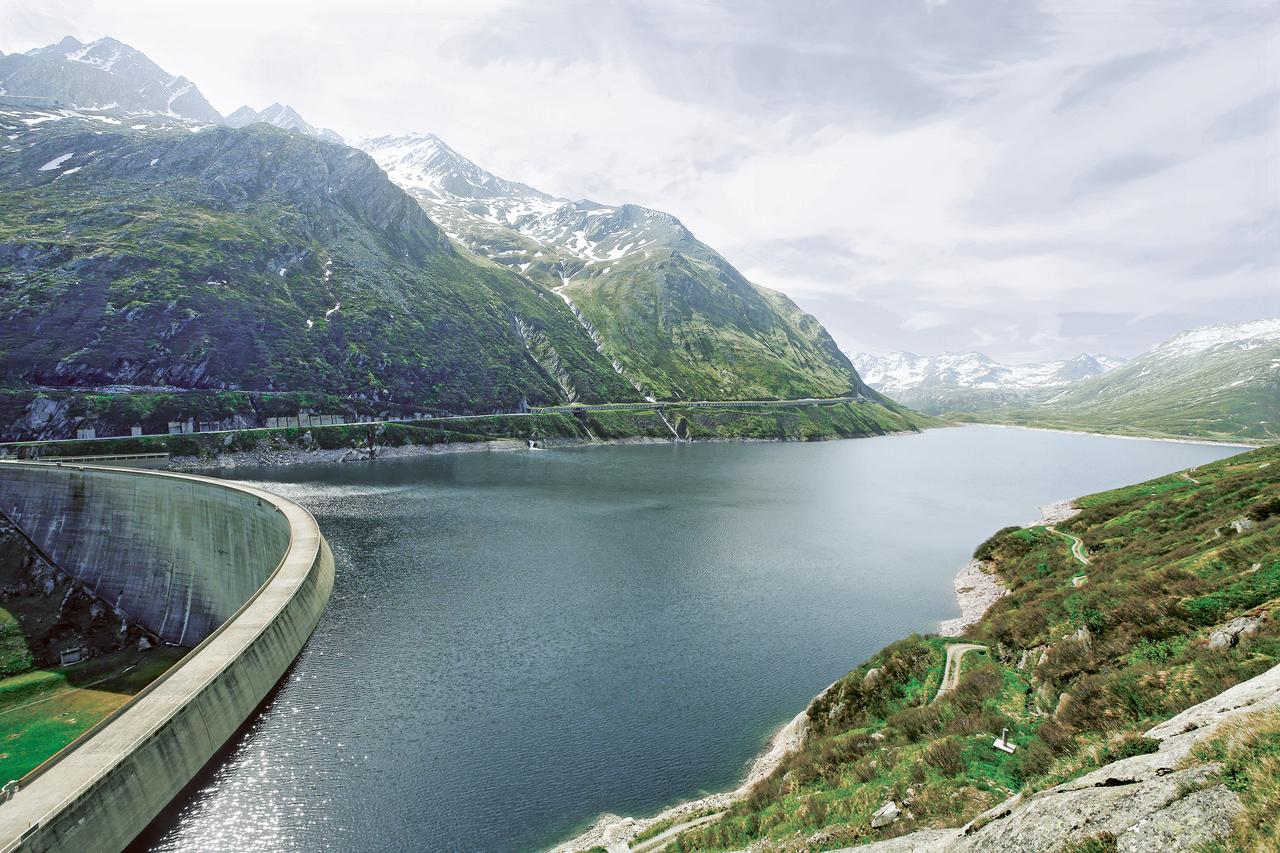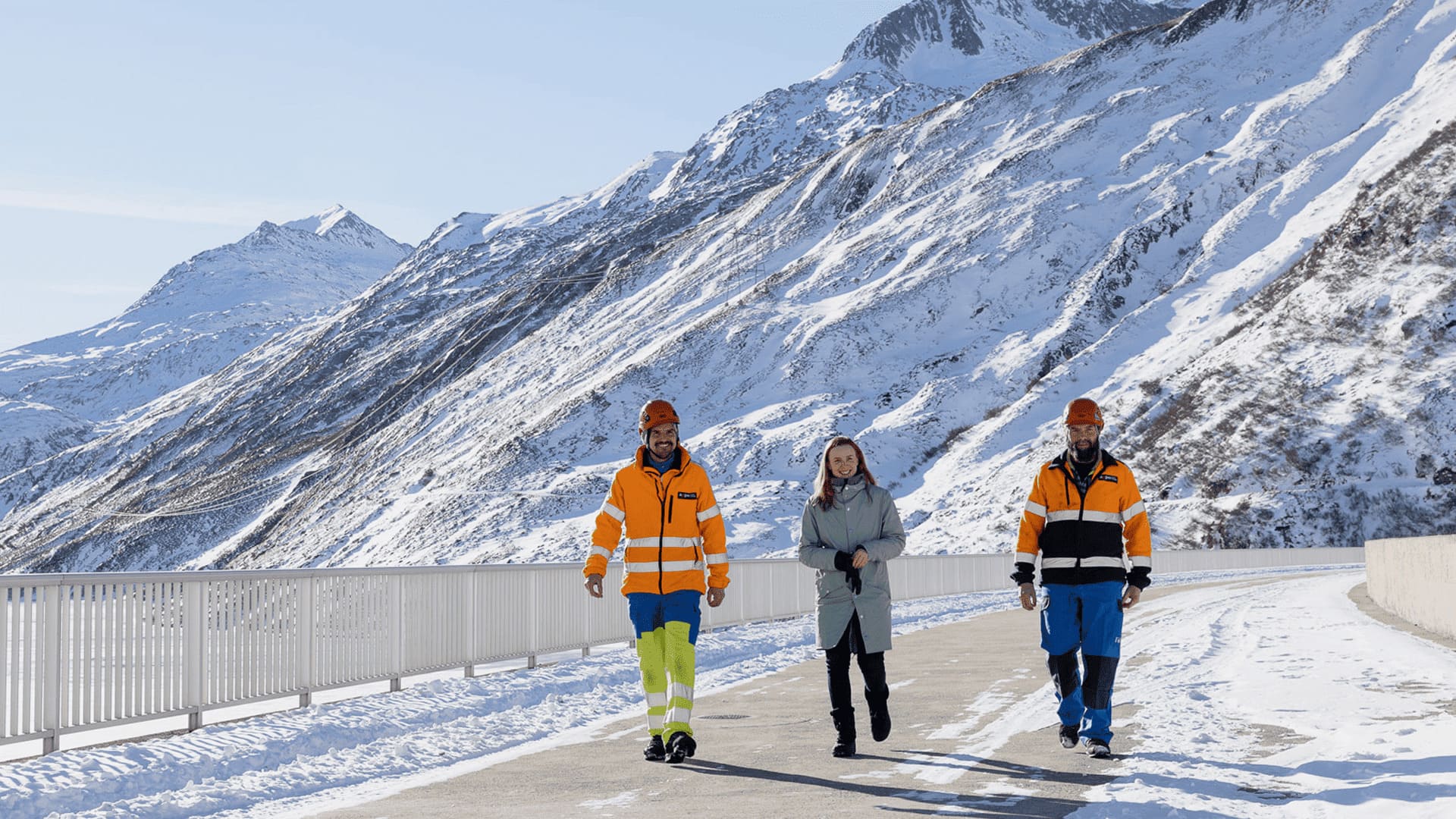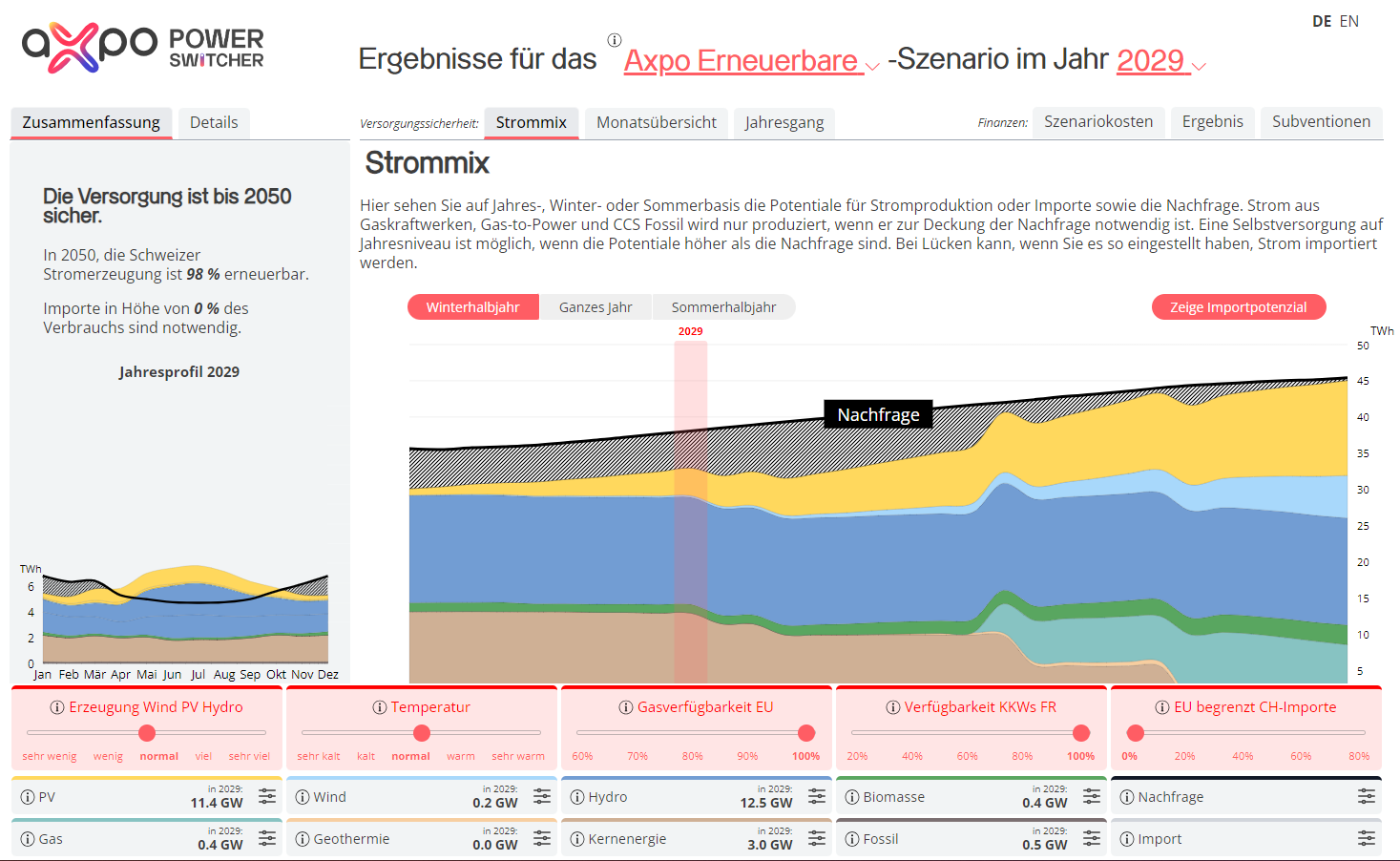25.03.2019 | Christoph Sutter on the opportunities for solar energy development
"Photovoltaics has a future"
Under the Energy Strategy 2050, about 40 per cent of total energy consumption in Switzerland must be replaced with renewable energy sources. The expansion of photovoltaics (PV) will play an important role here. Christoph Sutter, Head of New Energies at Axpo, explains why solar energy has a future.
Christoph Sutter, Axpo's interest in PV is new, isn't it?
Not exactly. Axpo's subsidiary CKW has been supporting the expansion of solar plants on Swiss rooftops for some time. CKW offers solutions for home-owners as well as business customers. Furthermore, Axpo has already made it possible to operate PV systems with no subsidies through long-term power purchase agreements (PPA), for example in Evora, Portugal. Axpo's spin-off Elblox also promotes solar power: On the platform of the same name consumers can procure their power directly from the neighbourhood PV plant with the help of block chain technology. Overall, solar energy is an important future market for Axpo. In upcoming years, we will continue to strongly expand our business in the area of PV.
Will government support for PV be necessary when feed-in remuneration or investment contributions expire?
Currently and in the years to come PV systems will no longer require additional subsidies. This is particularly the case in the area of own consumption where power for industry or households can be procured directly from the production site. In other areas – e.g. high alpine regions that are interesting from an energy perspective – subsidies will still be needed. However, I do not think the rigid catch-all mechanism is adequate. We need smart, market-based instruments. To me, auctioned subsidy tariffs for specific sectors such as high alpine PV systems would make the most sense.
You're addressing high alpine PV systems. What potential does photovoltaics have in the mountains?
Switzerland is an alpine country and the mountains offer different climate conditions than the Midlands. We can take advantage of these differences in the mountains. Alpine PV systems could make a significant contribution to the power mix and reduce import dependency during the winter months. Axpo is currently investigating the possibility of realising such systems. A possibility would be to install a PV system on the Muttsee dam at an altitude of nearly 2,500 metres. The PV system on the dam can take advantage of the high sun radiation owing to the relatively flat valley topography. This also offers great potential because of the location's southern exposure. We already had this in mind when the dam was constructed.
Isn't the expansion of PV systems in the mountains an illusion?
Why? Initial tests have already been carried out in Switzerland. Together with Zurich University of Applied Sciences (ZHAW) and EKZ, the ETH in Lausanne (EPFL) achieved good test results. High alpine PV systems have two advantages in particular: First, they have a 30% better performance thanks to stronger sun radiation and lower temperatures as compared to plants in lower regions. Second, the plants produce more power in the winter above the fog line. These facts indicate that we should put more focus on such energy production sites.
Aren't PV systems in high alpine regions too expensive?
It is true that the increased performance in high alpine regions would be eaten away by the high installation costs at many locations. We need to focus on solar at already existing high alpine infrastructure. I am thinking of dams, railways, ski lifts or avalanche barriers. In order to realise these systematically and rapidly we need smart, market-based subsidy mechanisms. Switzerland could learn a great deal from its neighbours here, e.g. France. Why don't we launch market-based subsidy tariff auctions specifically for high alpine PV systems?
Axpo has been a member of SolarPower Europe since 2018. What is the intention with this commitment?
Technology in the area of photovoltaics has been optimised in recent years. In addition, there has been an enormous drop in the costs to produce a kWh of solar power. This is why there has been a massive expansion of PV systems on a global scale. This trend will continue in the future. The expansion has resulted in great deal of know-how and new insights around technology. With its membership in Solar-Power Europe Axpo wants to benefit from this knowledge and the exchange with renowned companies on the topic of photovoltaics. It’s an important network for us.
What is SolarPower Europe?
SolarPower Europe is an association of the European solar industry (formerly: EPIA European Photovoltaic Industry Association) and unites companies and organisations along the entire value chain in the area of photovoltaics and solar energy. The association's objective is to shape the regulatory environment in Europe and to improve the business opportunities for solar power in Europe. Axpo joined SolarPower Europe in 2018.




.jpg)





